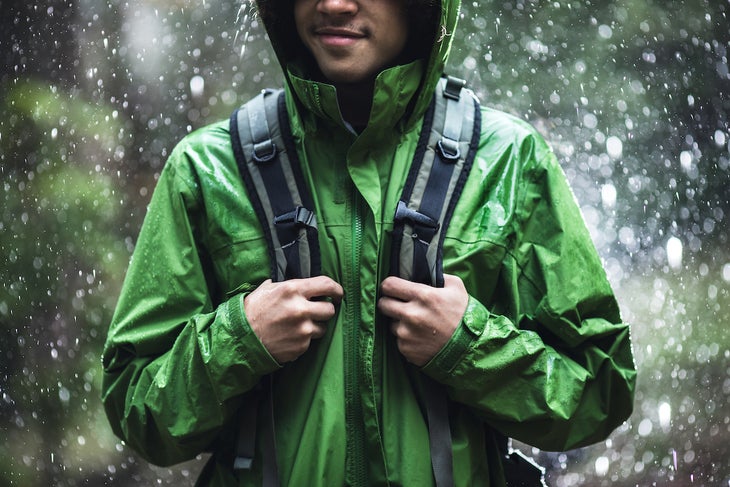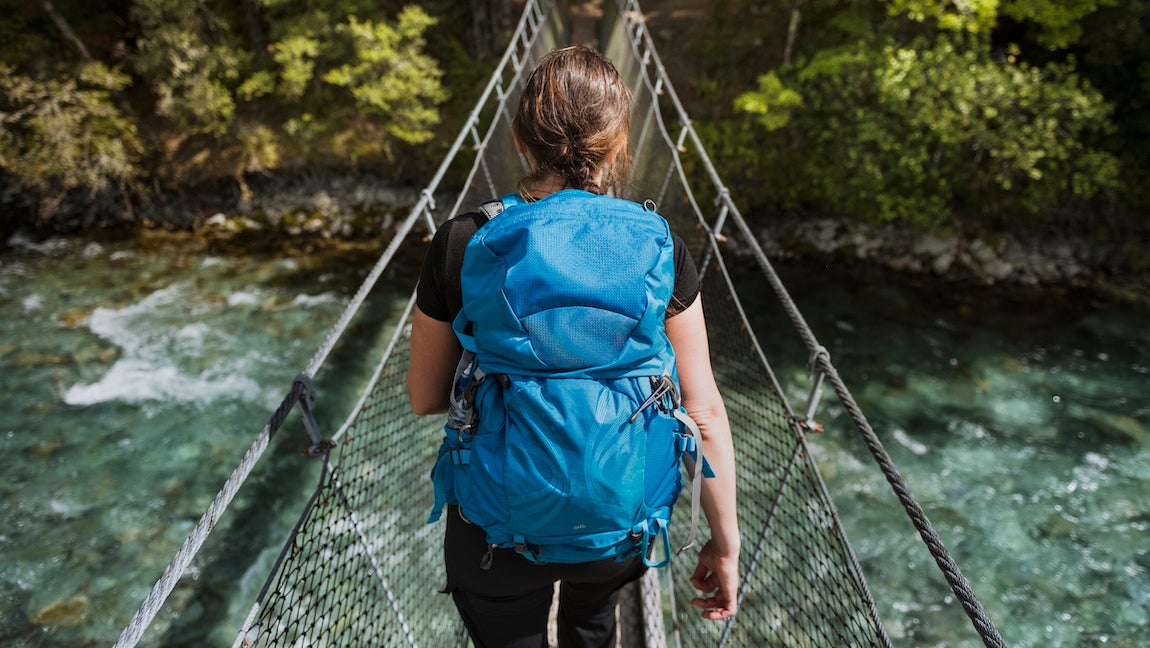Products You May Like
Get full access to Outside Learn, our online education hub featuring in-depth fitness, nutrition, and adventure courses and more than 2,000 instructional videos when you sign up for Outside+
Sign up for Outside+ today.
My trusty backpack has been through a lot. It has collected salty sweat from the desert trails of Southern California’s Anza Borrego State Park, brushed against sappy pines on the Pacific Crest Trail, and absorbed an unfortunate miso soup spill one frigid night in San Bernardino National Forest. And that’s all just in the past six months. Right now, my pack is a kaleidoscope of dirt and indistinguishable sticky stuff. It can be tricky to know when or how to wash a backpack, but if your backpack resembles mine, it’s overdue for a cleaning.
Why You Should Wash Your Backpack
You might be proud of your pack’s time-worn exterior, but oils, and UV from the sun can degrade the fabric over time, making it more susceptible to tears. Gunk can also make its way into zippers and buckles, increasing the chance that they break or fail. Also, food spills or crumbs can attract critters who won’t hesitate to gnaw through nylon for a snack. Periodic washing extends the lifespan of your pack, saving you money in the long run.
When To Wash Your Backpack
It’s easier to remove dirt and stains when they’re still fresh. Prevent long-term pack damage with regular zipper maintenance and by spot-cleaning dirt patches, pollen buildup, and stain spots when you get home from your hike. Gentle washes after every hike or every few hikes are much better for your pack than one full scrub-down postseason to reverse the damage done on the trail. They say “prevention is better than cure” for a reason.

What You’ll Need
You can’t just toss your backpack in the washer with the rest of the week’s laundry. The abrasion from top- or frontloading washing machines can damage your pack and scrape off its polyurethane outer shield—even in the delicate cycle setting. Also, according to Deuter, when detergent residue, sweat, and UV rays come into contact together, they form a chemical reaction that increases the speed in which fabrics break down. Best to stick with a hand wash. Here’s what you’ll need:
- Mild soap. Make sure it’s fragrance- or additive-free. Harsh detergents could damage the fabric and protective coatings in your pack. Castile soaps, baby shampoo, or any soap specifically made to clean technical fabrics (such as Nikwax Tech Wash) will be fine.
- Clean washcloth or sponge
- Used toothbrush or brush with soft bristles. To protect your pack’s protective coating, use this sparingly.
How to Wash Your Backpack
Before you get cleaning, make sure your pack is entirely empty. Shake out the granola crumbs that have been hiding in your hipbelt pockets longer than you’re willing to admit, check the interior pockets, and vacuum out any dirt and sand from the crevices of your pack. Check any tags or labels for specific cleaning instructions from the manufacturer: What’s suitable for one pack might not be suitable for another.
If your pack is just a little dusty, you can get away with a light cleaning. If it’s weighed down with several seasons’ worth of campfire smoke, dirt, or stains, opt for a thorough wash. Both cleanings should start with your pack entirely empty, and every pocket or compartment unzipped.
Gentle Cleaning:
- Use a damp washcloth to wipe out any crumbs from the inside of your pack.
- Apply a small dollop of soap to your washcloth, and use it to spot clean superficial stains off of the outside of your backpack. Add more suds if that’s not enough to clean your pack.
- Use lukewarm water (not hot) to rinse off any soap from your pack.
- Check your zippers for dirt, crumbs, or anything that could damage them over time. Use a dry washcloth or sponge to brush them clean.
Full Cleaning:
- Remove your pack’s hipbelt and shoulder straps (if your pack allows) and wash them separately with soap and your washcloth—or brush for particularly grimy spots. Be gentle with any spots that might come in contact with your skin.
- Remove your pack’s metal frame (again, if your pack allows).
- Submerge your pack in a bathtub, basin, or sink that is filled with 6 inches of lukewarm water and a small amount of soap (1 to 2 tablespoons). Let your pack soak for a minute or two.
- Swish your backpack around the water vigorously to clean both its interior and exterior. If you have troublesome spots or caked-on stains that aren’t getting clean with soap and water alone, use your brush or washcloth gently to work it out. Be gentle to avoid tearing mesh pockets or external compartments.
- Drain the dirty water. Fill the tub again with 6 inches of clean, lukewarm water. Rinse well, and repeat as many times as necessary to completely get rid of soap and dirt.

Stain Removal
Your pack doesn’t have to be a memory book of ill-fated spills and stains throughout your hiking career. Wet your sponge, add a dollop of soap, and lightly scrub your pack to work the stain out. Rinse off the suds with lukewarm water. You can do this during both gentle and full cleanings, too.
Clean the Gunk out of Zippers
Hardened mud, dust, and sticky food spills can all compromise your zipper’s zippability. But you don’t have to spring for a complicated zipper replacement just yet. Wet your washcloth or sponge, add a dollop of mild soap, and scrub any gunk out. You don’t need to do much more: Harsh chemicals and strong brush bristles can strip your zipper of its protective coatings and even corrode the metal itself.
A backpack with a busted zipper is a useless one. Regular cleanings will extend your zipper’s (and your pack’s) shelf life. Don’t wait until the end of the season to address that crusty spot; do it as soon as you can.
Disinfecting Your Pack
Uh, oh. You didn’t take care of your feet, and now you have athlete’s foot. Unfortunately, the fungal spores can transfer easily from your foot, to your sock, and eventually, to your backpack. It takes a lot to evict this pesky fungus, and dousing your pack in boiling water and bleach can damage it. Your best bet is to battle with bleach-free disinfectant wipes, such as those made by Lysol.
Wipe out the entire interior and exterior of your pack, making sure to get zippers, seams, and all hard-to-reach places. Remember, fungal spores are small and can live comfortably in the nooks and crannies of your pack. Make sure your pack has dried entirely before putting anything back in it.
Drying Your Pack
It might seem tempting to hang your pack up in your backyard and let it dry in the sun. Don’t do that—UV light can degrade its fabric. Don’t put it in the dryer, either. Even in a low setting, heat from the dryer can impair the pack’s fabric, warp the zippers, and melt the polyurethane coating.
Instead, open up all the pockets and air out your backpack inside or in a shady spot outside. You can use a towel to absorb excess moisture if your pack is sopping wet after its bath. It’ll dry faster if you hang it upside down, too.
